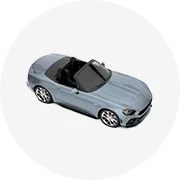





建設道路工学用の高効率カスタマイズ6.5hpエンジンタンパーガソリンディーゼル振動タンピングランマー
JP¥36,782 - JP¥40,869
最小注文: 1 ピース
1個あたりの配送: JP¥69,904











Gx160ガソリンガソリン5.5hpホンダエンジン小型ランマーコンパクタータンピングランマーロビン80kgタンパーランマー
JP¥22,007 - JP¥56,588
最小注文: 2 セット
1個あたりの配送: JP¥34,956












KowloonHCR90/110ガソリンガソリン5.5hpホンダエンジン小型ランマーコンパクタータンピングランマーロビン80kgタンパーランマー
JP¥23,264 - JP¥40,555
最小注文: 1 ピース






5.5HpGX160エンジンジャンピングジャックタンパー振動タンピングランマーを備えた振動タンピングランマーコンパクターを工場から直接供給
JP¥71,787 - JP¥73,139
最小注文: 1 セット
1個あたりの配送: JP¥69,882






HCR90LX大型アルミハウジング土壌ランマータンパーコンパクターエンジンgx160/loncin/robinモーター振動モーター建設用
JP¥43,855 - JP¥85,667
最小注文: 1 セット












ファクトリーダイレクト6.5hpエンジンタンパー振動タンピングランマーロビンEh12-2dガソリン付き
JP¥33,104 - JP¥36,796
最小注文: 1 ピース
1個あたりの配送: JP¥69,909
























High Performance Hand Push Tamping Rammer Jumping Jack Vibrating Tamper Backfill Earth Gravel Electric Impact Rammer
JP¥22,793 - JP¥55,016
最小注文: 3 セット












TRE-85ベストセラー85kgタンピングランマーマシン価格ジャンプジャックコンパクタータンピングランマー/ランマーコンパクター
JP¥144,612 - JP¥146,184
最小注文: 1 ピース
1個あたりの配送: JP¥80,166
ロビンエンジンタンパーランマーについて
Alibaba.comでは572個のロビンエンジンタンパーランマー製品を扱っています。ロビンエンジンタンパーランマーには、建設、建設動作、建材ショップなど幅広い種類のオプションがあります。また、ロビンエンジンタンパーランマーのロシア、インドネシアのインドから選べます。さらにエンジン、モーター、ベアリングのロビンエンジンタンパーランマーもあります。ロビンエンジンタンパーランマーには提供、使用できませんがあります。

































































































































































